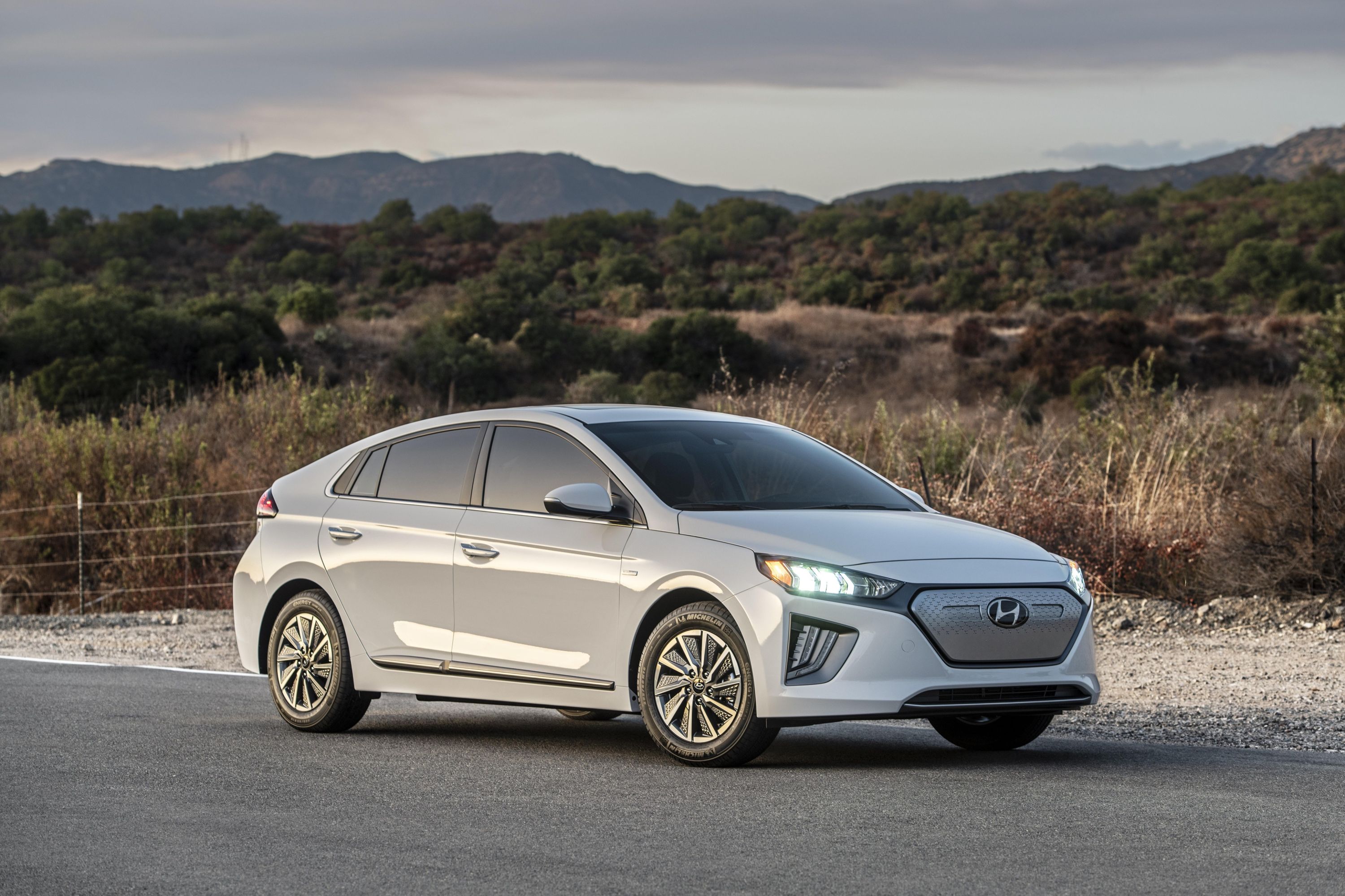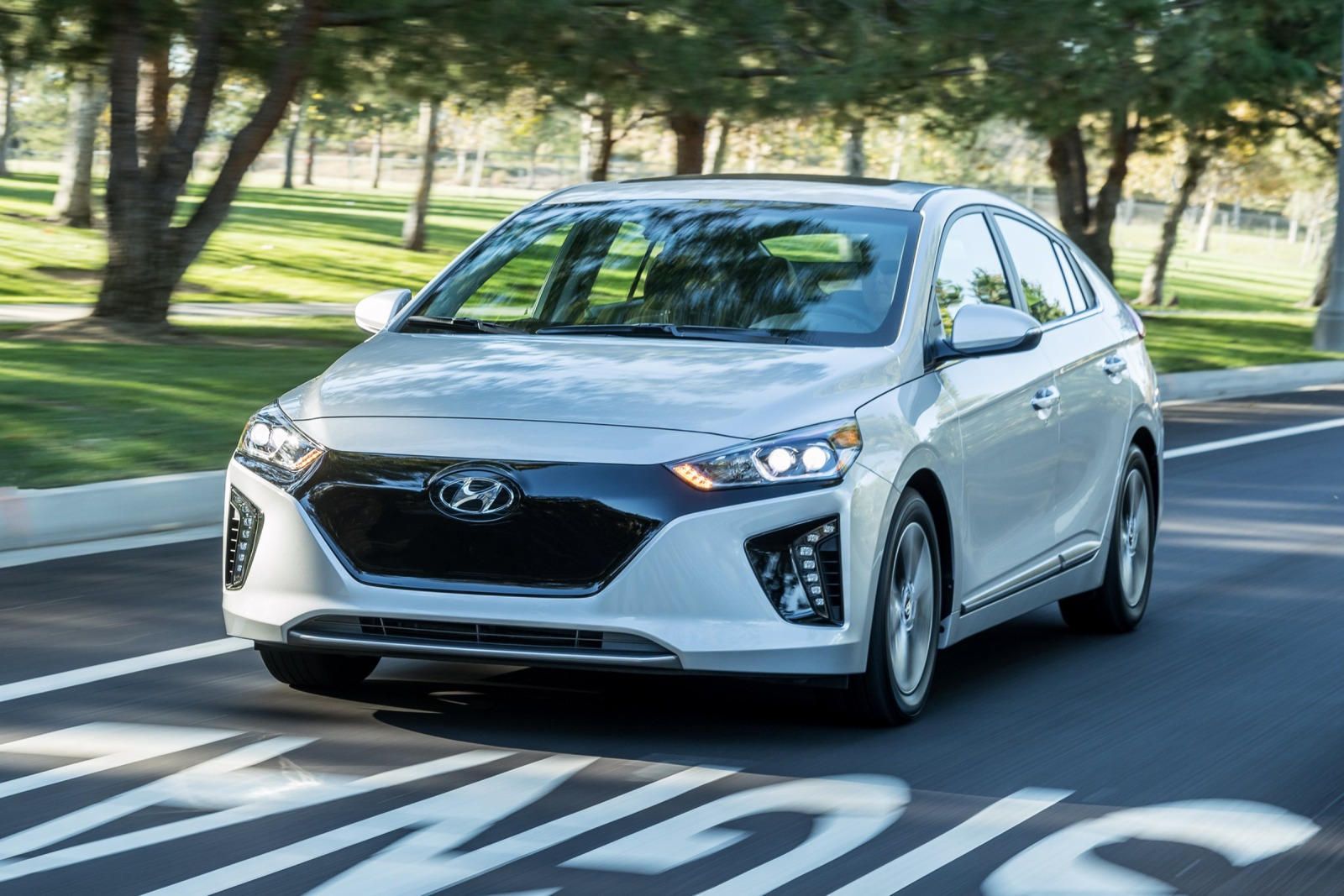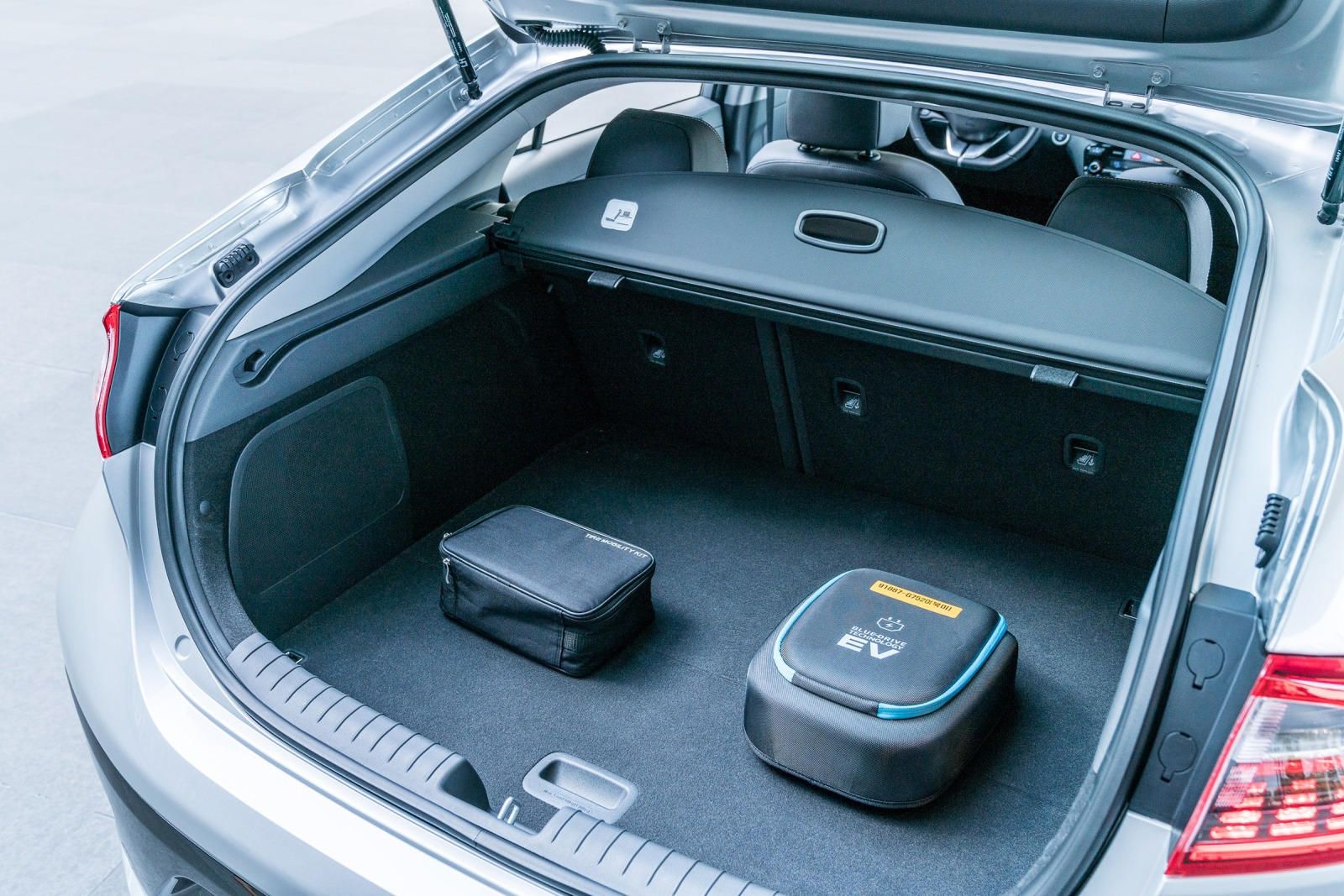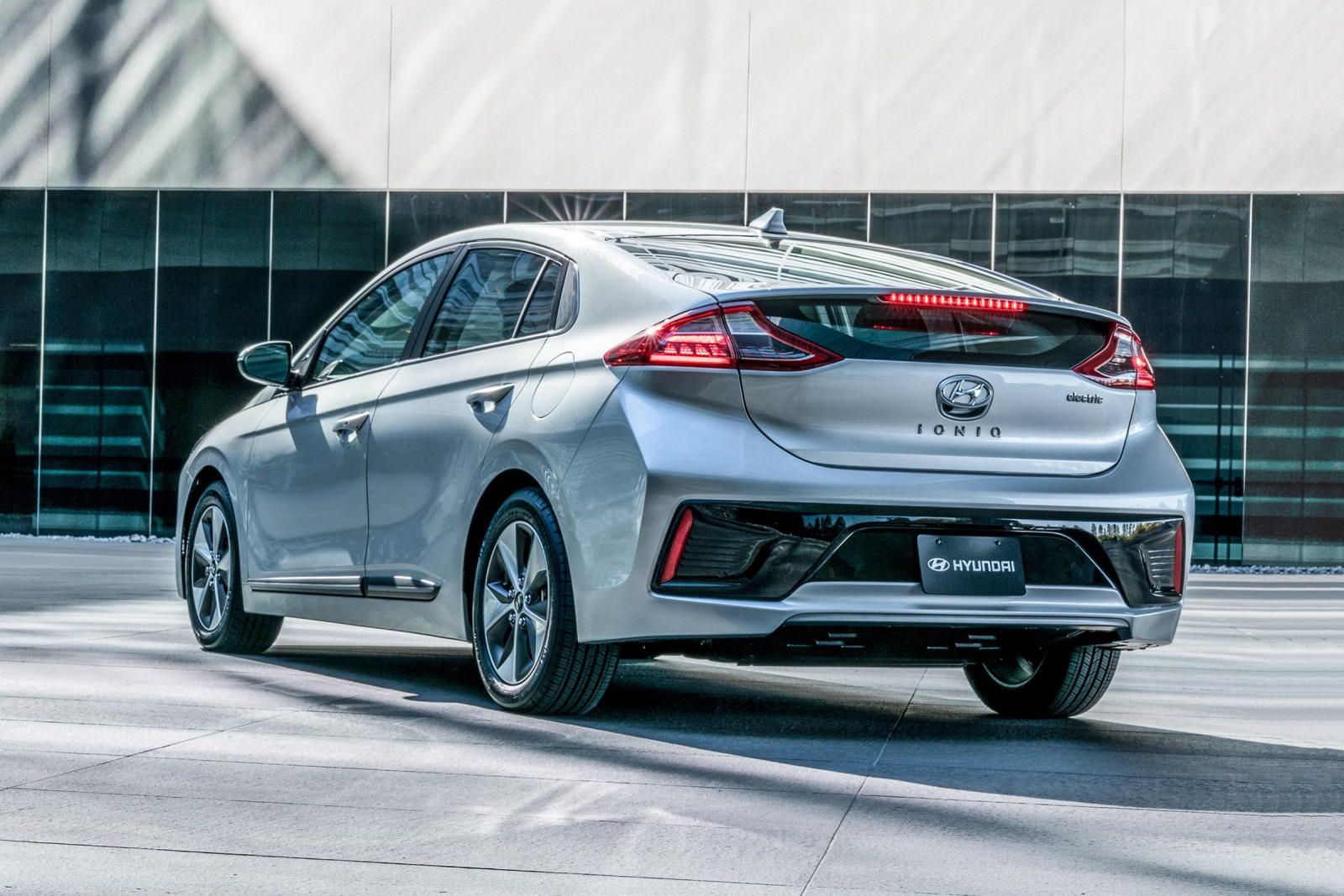2017 Hyundai Ioniq EV Review
With EVs becoming commonplace, led by Tesla's market dominance, it seems a little strange that Hyundai only sells the Ioniq Electric EV hatchback in the state of California. Think of the Ioniq as Hyundai's initial foray into the segment though, with the Ioniq architecture underpinnings bespoke hybrid and plug-in hybrid models as well - both of which offer viable alternatives to the Toyota Prius. The Ioniq Electric, however, has far tougher competition as a compact EV, with the likes of the Nissan Leaf joined by a larger battery pack for extended range and the revolutionary Chevrolet Bolt still leading the class for range and driving dynamics. It would seem in 2017 the Ioniq EV is outgunned from the word go.
Exterior Design
One of the Ioniq's best traits is an unassuming design that would seem at home on any combustion compact hatch on the market. This, compared to the Prius' notion of 'style' that seems to make as many enemies as friends.
The only dead giveaway that the Ioniq Electric isn't just another compact is the lack of a grille, replaced by a gloss black panel without interfering with the design. The black panel flows outwards to surround the lower edges of the headlights - projector items as standard with high-intensity discharge (HID) units on the Limited model. LED daytime running lights are standard, housed where standard lower air intakes and front fog lights would usually be found. The simplistic front end does feature a lower air intake, disguised in black on the front lower lip, which acts to help cool the battery pack and running gear.
Aerodynamically designed 16-inch alloy wheels fill the lightly flared wheel arches that give the Ioniq a square, masculine presence, while a lightly sculpted beltline runs the side of the Ioniq from above the wheel arches to the tip of the wraparound LED tail lights. The lower edges of the door feature a black beltline on the base model, with chrome equipped to the Limited trim, while black window surrounds are standard, with chrome on the Limited trim, housing solar control glass windows. The side-profile of the Ioniq blends hatchback and coupe styling, with a long sloping roof merging into the tailgate, with a chunky C-pillar behind the rear door window.
At the rear, the large area rear windscreen is angled severely, with a smaller glass panel located beneath the tailgate spoiler for enhanced rearward visibility. This smaller glass panel flows into standard LED taillights on either side with integrated turn signals. The tailgate shut line features strongly rounded corners, beneath which is a gloss black panel on the lower bumper with an integrated number plate housing.
The Ioniq Electric is available in four exterior colors: Ceramic White, Symphony Air Silver, Intense Blue, and Black Noir Pearl.
Engine, Performance and MPG
The Hyundai Ioniq platform is built on a front-wheel drive platform regardless of whether it's hybrid, plug-in hybrid, or pure electric. In the Ioniq Electric, Hyundai has installed a 28.0 kWh lithium-ion polymer battery pack, mated to an electric motor with outputs of 118 horsepower and 218 lb-ft of torque. The 360-volt system comes with a 6.6 kW charge system with DC fast-charging capabilities and regenerative braking that can be altered via paddle shifters that increase or decrease the level of brake regeneration to your desired comfort levels.
The Ioniq's range of just 124 miles may have been real-world usable a few years ago when it first launched, but the game has moved on, with the latest battery technology offering nearly double that range in the case of the Chevrolet Bolt, while the Nissan Leaf offers 150 miles as standard with an uprated battery expected to deliver more than 200 miles. With a Level-3 DC fast charger, the Ioniq Electric can recuperate up to 80% of its charge within 23 minutes, while a full charge on a 220V/240V system takes about four and a half hours. If, however, you're unlucky enough to only have a 110V/120V power source available, the Ioniq Electric could take up to ten hours to charge fully.
As for performance, EVs have the benefit of instant torque to shunt them merrily along their way. The Ioniq isn't the torquiest of the EVs out there, but it benefits from a lower weight than most at 3,200-pounds, giving it some peppy performance from a standstill.
Interior Design, Features and Dimensions
The Ioniq Electric may sit on the cheaper side of the compact EV segment, but there's a surprising depth of quality apparent from the moment you climb in. The front doors open wide, making it easy to climb in and out, and they close with a reassuring solidity despite their light weight. The seats don't boast excessive side bolstering, so slipping in is easy, and finding a comfortable driving position is a matter of simplicity thanks to a wide range of seat adjustment and a good range of movement on the tilt-and-telescoping steering wheel. The front and rear structural pillars are chunky items and their positioning creates substantial blind spots while the sloping rear windscreen doesn't offer much visibility. The lower rear glass panel goes a long way to correcting this, though, and pairs up with a standard rearview camera to overcome rearward visibility issues.
Space for frontal occupants is generously apportioned, even with the sunroof of the Limited trim. The rear of the cabin is a bit of a different story, however, as the sloping roofline impedes headroom while the overall proportions leave legroom a little short. You might be able to fit five people in the Ioniq Electric, but only if the rear three occupants are kids; if you're trying to fit adults in there you'll fit two, and they best be below 6-foot tall. Those in the rear may also find it difficult to climb in and out due to a combination of a high rear bench position and the sloping roofline creating short door openings.
The bulk of the Ioniq's materials are harsh and gray, from the volcanic rock-derived plastic dash to the gray sugar-cane bio-fabric upholstery on the base model, and they generally feel low-rent despite being well screwed together. There are a couple of surprises. The main touch point for the driver - the steering wheel - deserves particular praise with exceptional feel and wonderful shaping that fits a natural thumb-grip better than many a premium brand's wheel does. The flat-bottomed shape is, however, at odds with the Ioniq's persona; why equip a sports car steering wheel to an ultra-efficient EV?
As is the standard with Hyundai models, the overall layout of the cabin is plain and simple, with the bulk of the controls and switches placed where you naturally expect them to be. The large, fixed buttons for the infotainment system are a plus-point and the seven-inch touchscreen infotainment system is crisp and easy to use with a display that fends off glare to a decent standard. It also features standard Apple CarPlay and Android Auto functionality, and the upgraded voice controls function well.
There is a broad range of available equipment for the Ioniq Electric, with the basic model featuring standard air conditioning with automatic temperature control, heated front seats, and SiriusXM satellite radio. The Limited model represents a substantial price increase but features leather seating surfaces, an eight-inch navigation system with Infinity audio, a power sunroof, wireless device charging, and a 10-way power driver seat with lumbar adjustment.
Trunk and Cargo Space
With the Ioniq platform built with electrification in mind, Hyundai has equipped the battery pack beneath the rear seats with minimal intrusion into the cargo bay. While the interior room is a little hampered by this, it bodes very well for the cargo volume. Behind the rear seats, there's a generous 23 cubic feet of storage capacity, which is about par for other hatchbacks of this size and segment and is marginally smaller than the Nissan Leaf. But the large rear hatch makes it easy to load, and despite a lack of depth there's still enough room for a couple of large suitcases, or up to five smaller carry-on cases. If you need the extra space, the rear bench features a standard 60/40 split to inflate the storage capacity.
Driving Impressions
Hyundai wanted the Ioniq Electric to look and feel as much like a regular car as possible, and to a large extent it's succeeded. The Ioniq boasts well-rounded driving dynamics and an enjoyable driving experience, but one that leans more towards comfort than towards driver thrills.
It's in the steering feel that the Ioniq fails to deliver. The wheel itself is phenomenally well moulded, but it feels too light in hand and doesn't weight up proportionately to the cornering forces. It's precise on turn-in and responds well to inputs mid-corner as well as at low speeds when maneuvering through tight city spaces, but there's a lack of feedback that we feel could have been a bit better.
However, the suspension is well tuned and the battery's low mounting point gives the Ioniq a low center of gravity that bodes well for handling attributes and an overall feeling of stability. The relatively low curb weight for an EV helps give the Ioniq a feeling of surprising nimbleness, but the suspension is a little too buoyant and aloof at times and it feels floaty over undulating surfaces. Grip is also limited, due to the efficiency-biased tires, so while the Ioniq feels lively, there's only so much that can be extracted from it in terms of driver thrills.
The ride is for the most part compliant, on the softer side of things as it makes effective use of the light weight to avoid being overly sprung. It's about par for the segment, though, with none of the other offerings focusing on anything but comfort. But the floatiness leads to porpoising on wavy tarmac, which could result in car-sick prone passengers feeling quite ill.
To Hyundai's credit, the brakes have been particularly well engineered - something that is commonly a flaw when it comes to EVs. Hyundai has programmed in three levels of brake regeneration strength, accessible via steering mounted paddles that increase or decrease the levels of 'engine braking'. The most aggressive setting still isn't overly aggressive, and the brake pedal is required. Fortunately, it's programmed with good levels of adjustment and modulation and without the grabbiness often associated with these types of systems.
Reliability and Problems
Despite the surfaces looking and feeling a little uncouth and drab, particularly on the base Ioniq Electric, everything feels solidly put together and devoid of rattle, even on uneven surfaces. While relatively trouble free, the Ioniq Electric does have a few potential flaws, particularly in cold climates prone to below-freezing temperatures. As with most EVs, electric range is negatively impacted by cold weather conditions, and owners in such climates can also expect increased charge times. There have also been a few complaints with regards to the charge port icing over, and the moisture then affecting the charging of the Ioniq. These types of issues are not isolated to the Ioniq, but in general do affect most EVs in cold climates. There has also been one recall for the current generation Ioniq, in 2017, in which coolant leaks occurred that infiltrated the Electronic Power Control Unit (EPCU) which resulted in stalling and damage of components. This issue shouldn't affect 2019 Ioniqs but it's worth being aware of.
Price and Trims
The Ioniq Electric is available in two flavors as an all-or-nothing affair when it comes to pricing and specification. The base Ioniq Electric does without numerous aids and pleasures, but still comes decently equipped with 16-inch alloys, automatic headlights, LED daytime running lights, LED taillights, a rearview camera, heated side mirrors, keyless entry and push-button start, automatic climate control, a wonderful leather-wrapped tilt-and-telescoping steering wheel, heated si-way adjustable front seats, and a seven-inch touchscreen infotainment system with Bluetooth, Android Auto, Apple CarPlay, SiriusXM, HD Radio and Hyundai's Blue Link telematics suite. The base MSRP for the Ioniq Electric is $30,315, which puts it in a comparable price range with the Nissan Leaf.
The price difference between the base model and the Limited trim is substantial, $6,500 to be precise. However, the differences are substantial too, as over and above the specification of the base model, the Limited gets power folding side mirrors, chrome exterior trim, HID headlights with LED guide, a power tilt-and-slide sunroof, heat pump, leather upholstery, rear seat HVAC vents, 10-way power adjustment for the driver's seat with lumbar adjustment and memory function, an eight-inch navigation system, three-years complimentary Blue Link Guidance Package, an auto-dimming rearview mirror, wireless device charging pad, Infinity premium audio system with eight speakers, Clari-Fi music restoration technology, and LED interior illumination. The Limited also gets extra safety features in the form of blind spot monitoring, rear cross-traffic alert, lane change assist, autonomous emergency braking with pedestrian detection, lane keep assist, adaptive cruise control with start/stop, dynamic bending headlights, driver attention warning, and high-beam assist.
Both derivatives feature the same drivetrain.
Verdict
The Ioniq has been around for a few years now, and while it may have been Hyundai's first electric effort, the best Ioniq isn't the pure electric one. It boasts decent driving dynamics and practicality, but is severely lacking when it comes to the range it offers compared to other established EVs, and the California-only availability is also a bit of a bummer. At the entry price of an Ioniq Electric you'd be better off looking at a Nissan Leaf, and if you had your heart set on the Limited, then another electric Hyundai product is leagues ahead for a similar price. The Hyundai Kona Electric is everything the Ioniq should be and more, and if you've got eyes on a Hyundai EV, that's the one you should be aiming for.




